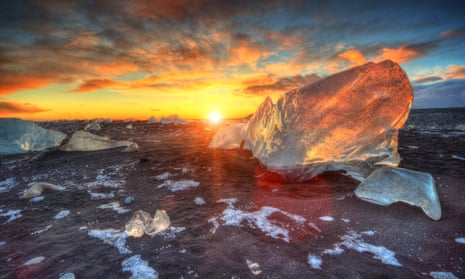Some people go on holiday in winter to get away from the ice, but others travel specially to see it. Visitors to Toyokoro, a town on the northern Japanese island of Hokkaido, come to see “jewel ice” that washes up around the mouth of the Tokachi river, while Iceland has its own “Diamond beach” on the Jökulsárlón lagoon. In both places the sand is littered with chunks of smooth, clear, jewel-like ice. The beautiful natural surrounds make for a picturesque view, especially when the ice catches the coloured light of a sunset.
Ice is normally cloudy due to trapped air bubbles, which cannot escape when water freezes rapidly. Jewel ice is formed when the surface of the freshwater river freezes slowly, driving out the air bubbles and allowing large, clear ice crystals to form. The same principle of slow freezing is applied in icemakers used for ice sculpture and in fancy bars.
Once it is formed, chunks of the clear jewel ice break off, and are broken into smaller pieces by the action of the sea. As they are washed up, the fragments are polished by friction with sand, producing attractive rounded forms like beach pebbles.
This type of ice has always been present, but has only become well known recently thanks to Instagram and other social media; the terms “jewel ice” and “jewellery ice” date to about 2016. Similar sites at glaciers in Alaska and southern Chile may start to publicise their icy treasures, too.

Comments (…)
Sign in or create your Guardian account to join the discussion